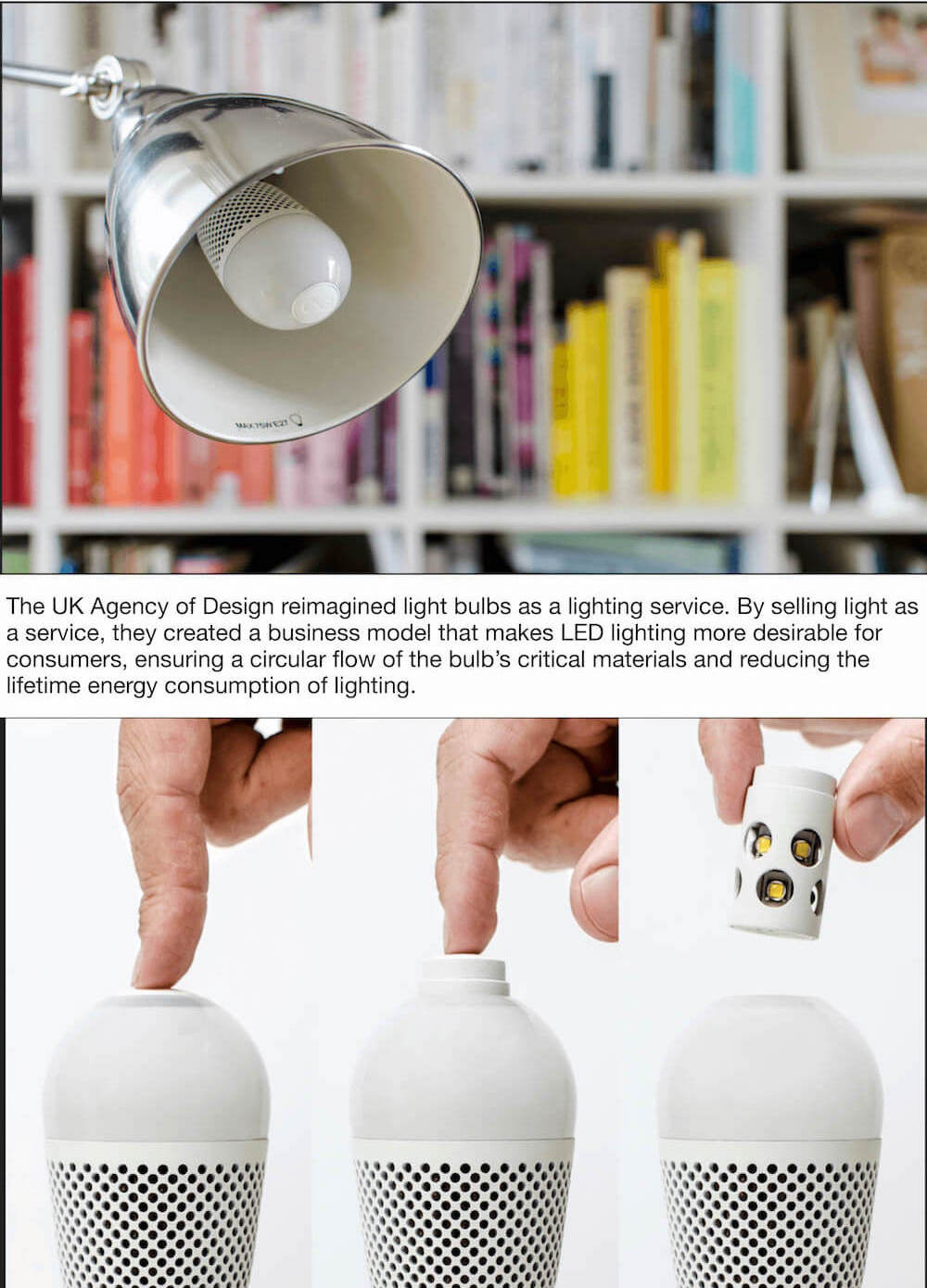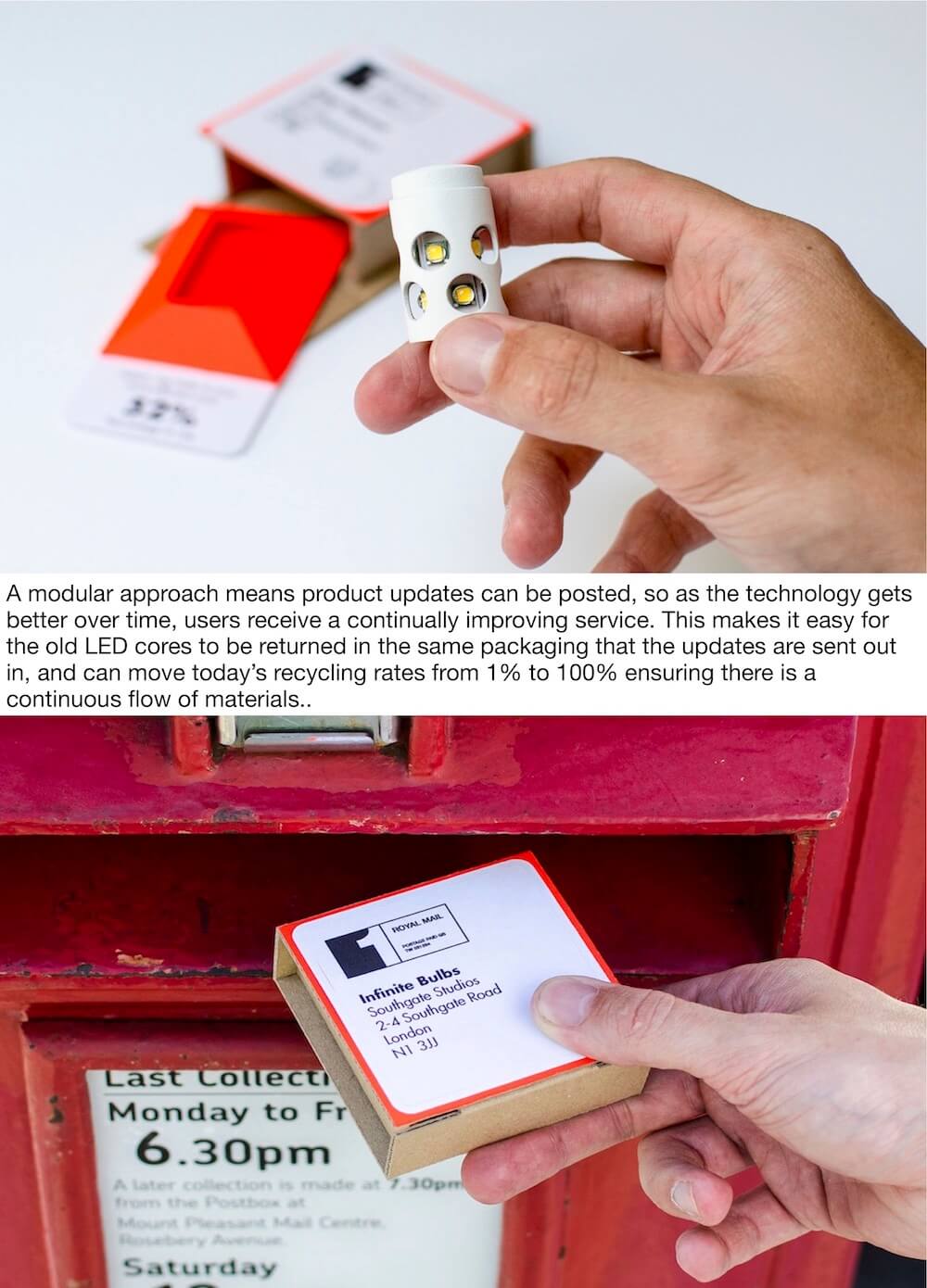Lightbulbs as a Service
Lightbulbs-as-a-Service
Did you know that lighting uses 17% of all energy generated? In this example, we look at ‘Light Bulbs-as-a-Service’ from The Agency of Design² who found a way to redesign the light bulb to recover as close to 100% of the materials as possible for reprocessing.
When LED bulbs stop working they should be recycled to extract the valuable critical raw materials they are made from. Instead, bulbs end up in household bins. Even for the bulbs that do make it into the recycling system, our current recycling technology is not able to recover their critical materials.
The elements used in these light bulbs have existed since the beginning of the universe and have the potential to solve all kinds of problems. LED production is set to boom in the coming years. If we do not find a way to recover their materials, rather than losing track of them, we will have no idea what sort of future technologies we might be inhibiting.
In this ‘Light Bulbs-as-a-Service’ example, the aim is to solve the problem of recovering the critical raw materials for reprocessing and address the fast-paced technology change of LEDs. As no consumer wants to pay for light bulbs that are inefficient compared to the latest models, The Agency of Design developed a modular light bulb that is not dependent on the ever changing improvements in lighting.
This helps to avoid obsolescence, something that can be problematic and unprofitable when offering a product as service. Instead consumers do not own light bulbs, but instead pay for their use. For an annual fee, consumers receive only the inner component of the light bulb (the actual light itself) delivered to their door.
The outer shell is designed to last for a very long time. If anything goes wrong with the product, it is replaced as part of the service.
This business model allows the manufacturer to retain ownership of the product so at end-of-life the materials can be reprocessed easily instead of being returned via recycling collection services which risks the product ending up in landfill.
An InnovateUK funded research project that reimagined lightbulbs as a lighting service. By selling light as a service we created a business model that makes LED lighting more desirable for consumers, ensures a circular flow of the bulb’s critical materials and reduces the lifetime energy consumption of lighting.
References:
This case study is from The Agency of Design



